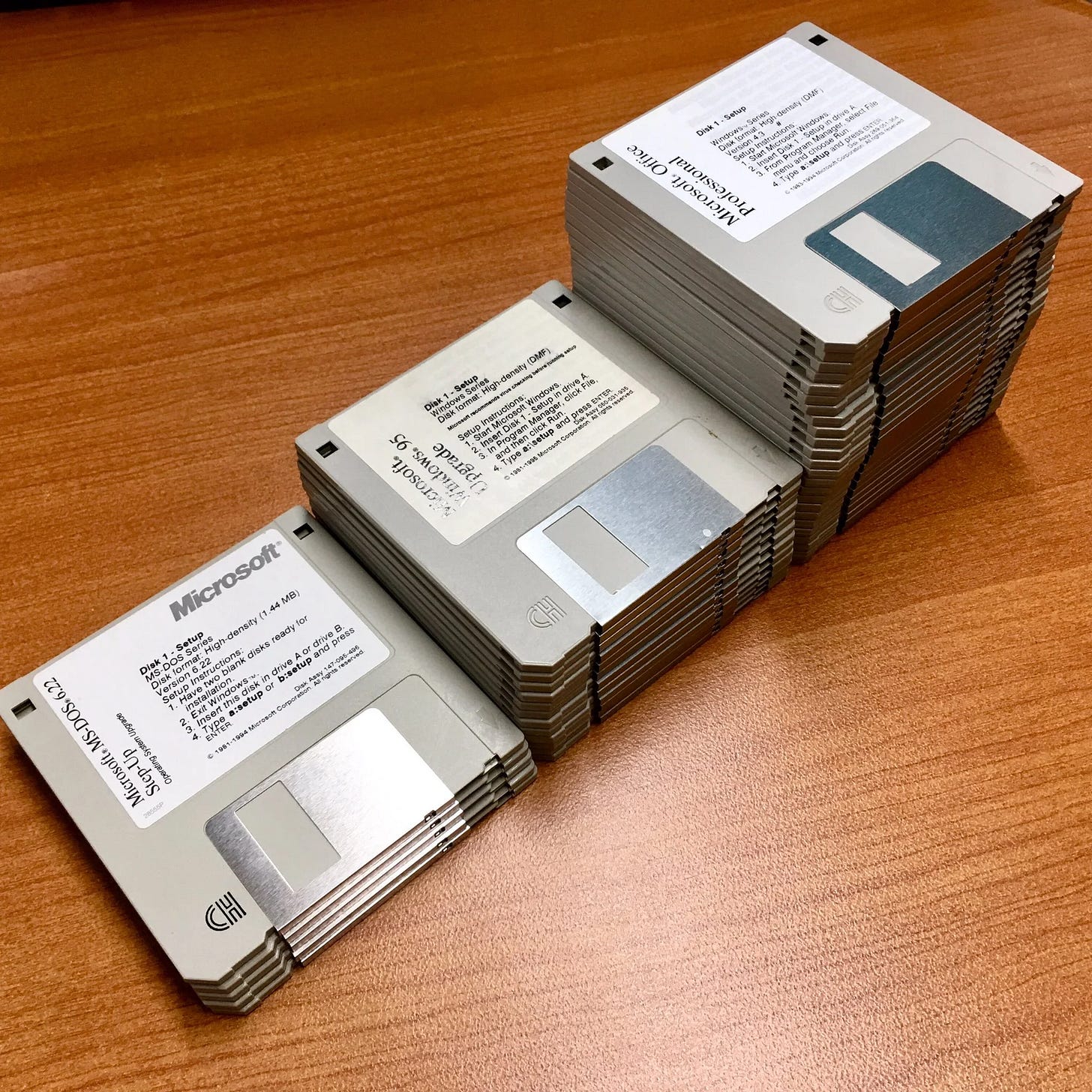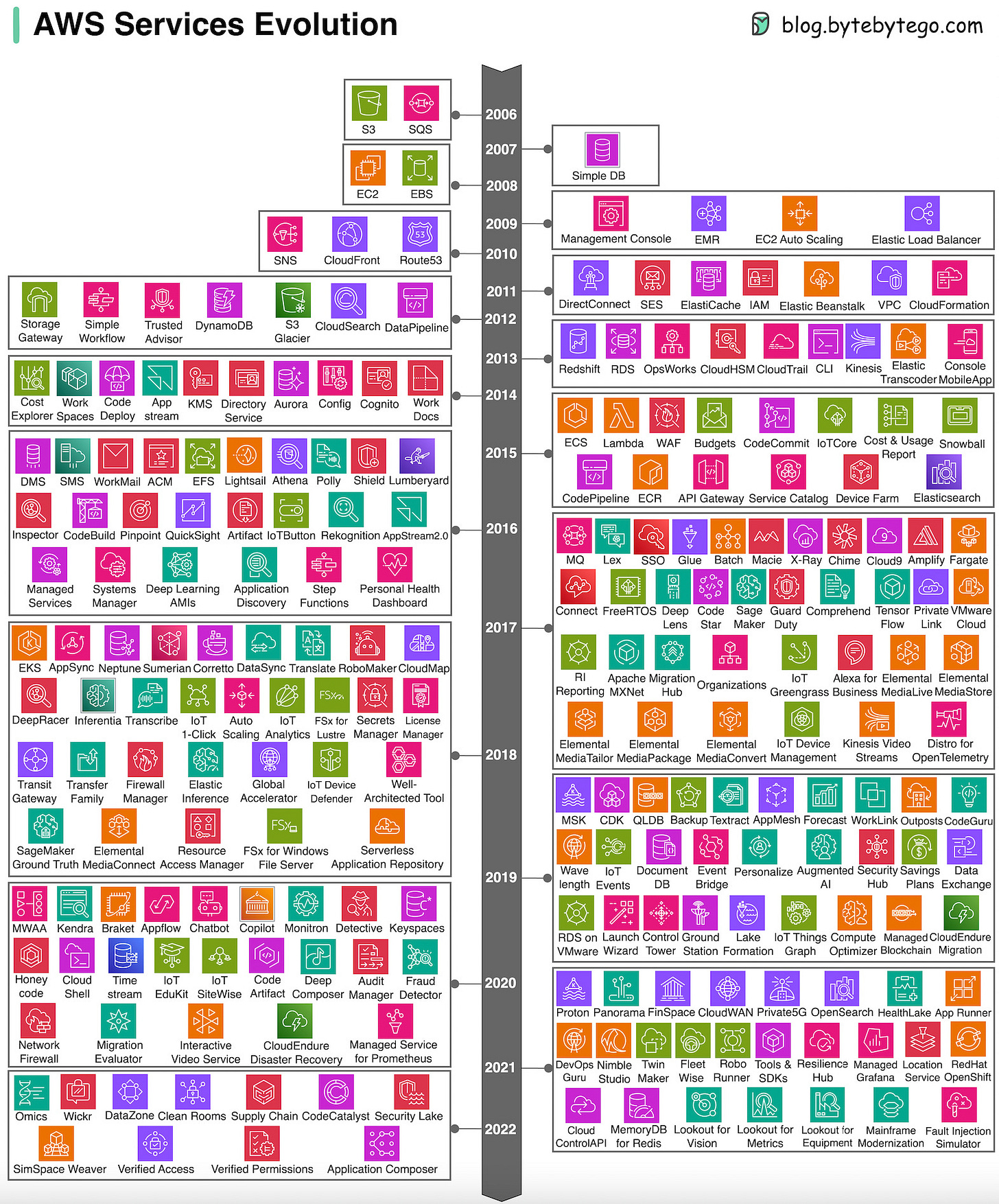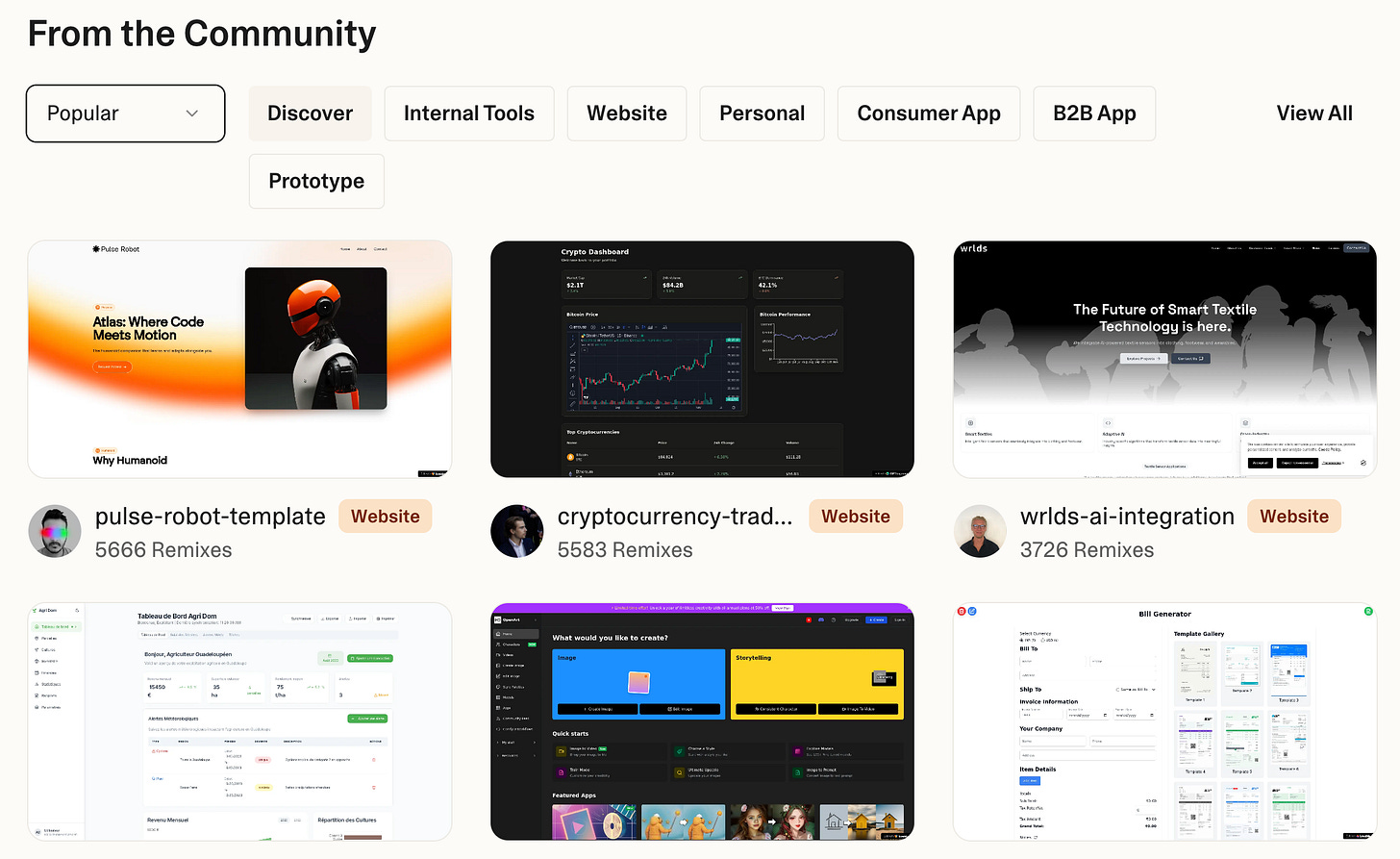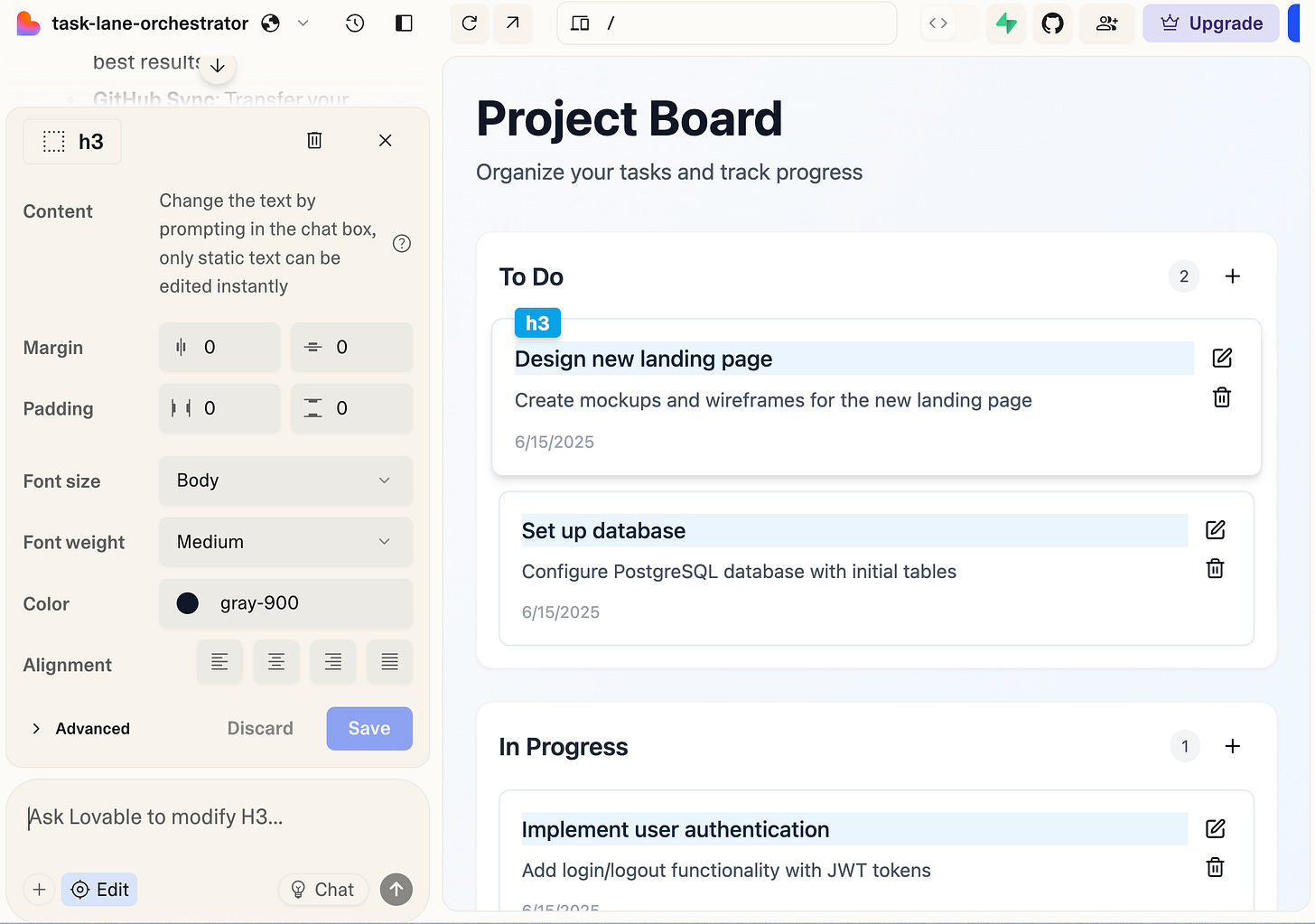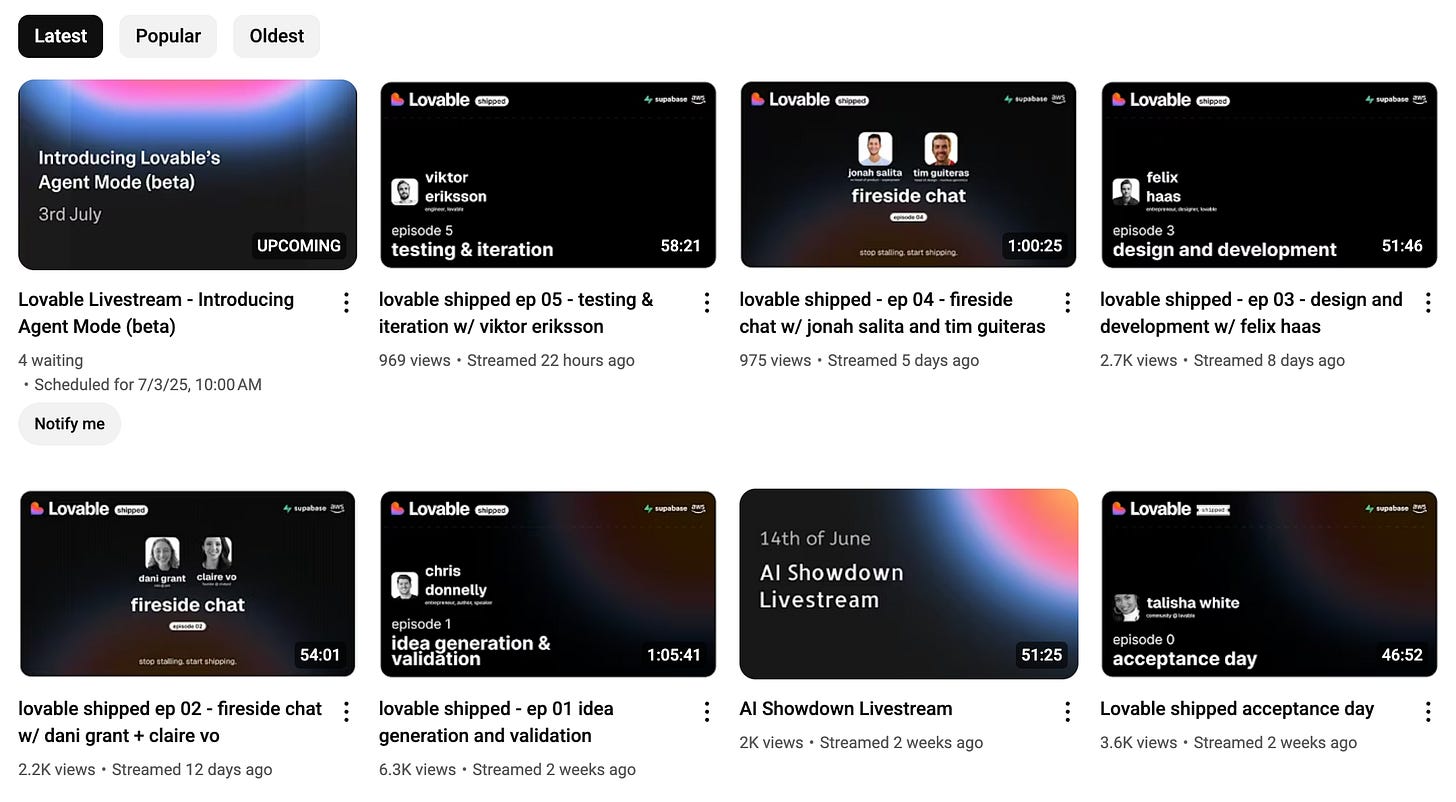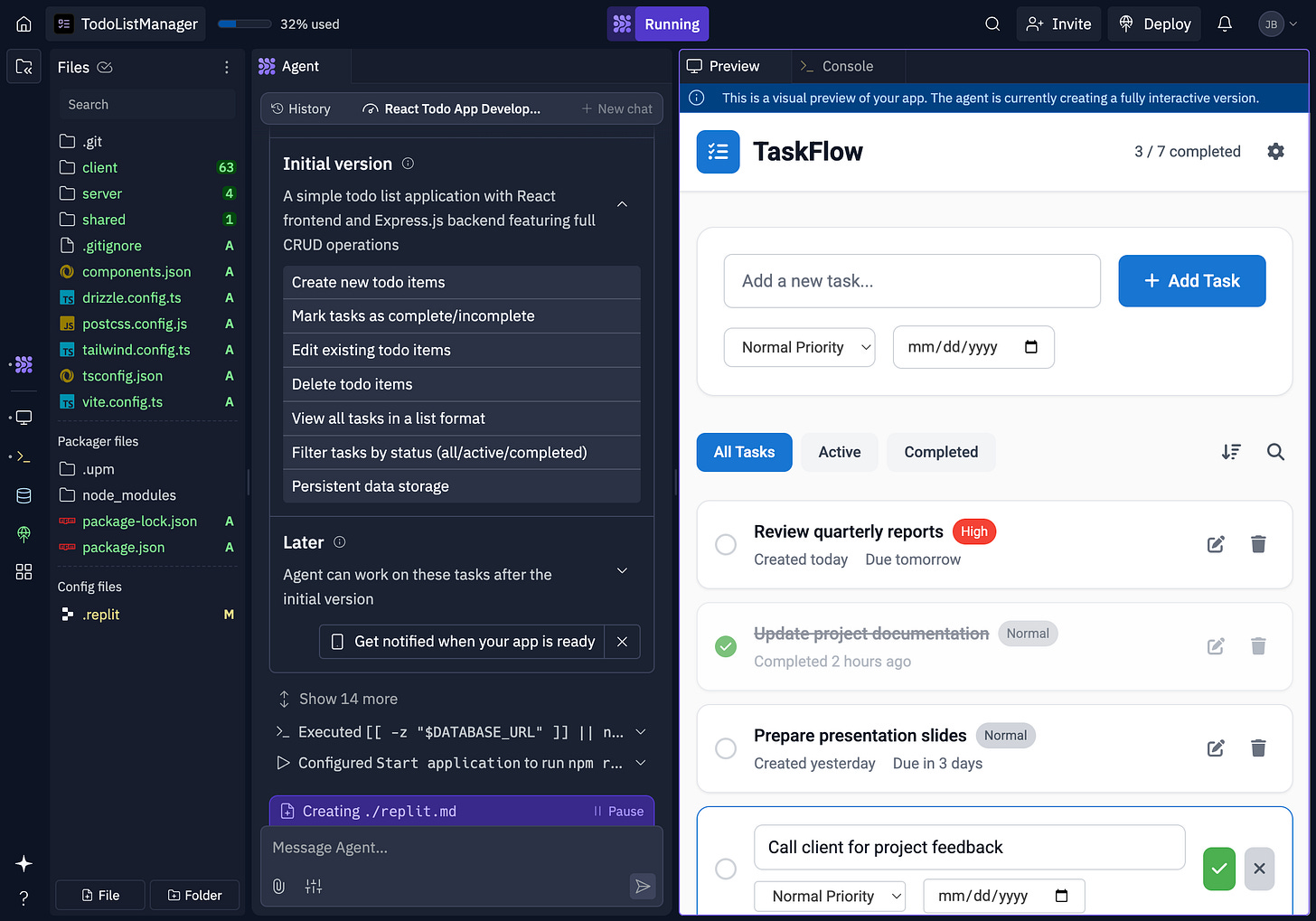Why You Should Join Lovable
The last piece of software
Some opportunities to consider:
Clay has grown revenue from 5 to >30m in the past year and took less than 18 months to reach an eight figure run rate. They’re currently hiring product and systems focused software engineers in New York City.
Modal has grown revenue significantly in the past year and has taken less than 18 months to reach an eight figure run rate. They’re currently hiring product and systems focused software engineers in New York City.
Welcome to “Why You Should Join,” a monthly newsletter highlighting early-stage startups on track to becoming generational companies. On the first Monday of each month, we cut through the noise by recommending one startup based on thorough research and inside information. We go deeper than any other source to help ambitious new grads, FAANG veterans, and experienced operators find the right company to join. Sound interesting? Join the family and subscribe here:
Why You Should Join Lovable
(Click the link to read online).
Programming has always come with its set of challenges.
In the 1950s and 1960s, it would have been fitting an entire payroll system into 4KB of memory, waiting until your slot (midnight) to use the compiler, or managing physical punch cards - where debugging meant going through a thousand precisely stacked cards to search for a few misentered holes.
In the 1980s and 1990s, it would have been splitting individual programs across a dozen floppy disks, going through phone book-sized reference manuals to search for two-line examples, or manually managing memory - dealing with misused pointers, memory leaks, and vague errors like segmentation faults and core dumps.
In the 2000s and 2010s, it would have been learning the twenty ways to center a div, understanding why JavaScript decided 2 plus "2" should equal "22”, or managing the never-ending stream of new frameworks, best practices, and cloud infrastructure - everything from containerization and CI/CD pipelines to infrastructure-as-code.
Even today, it's explaining to Cursor why each "ah, I see it now!" is still wrong - while switching models.
Despite decades of progress, the challenge of software development still mostly revolves around troubleshooting errors, configuring environments, and wondering why things never quite work out of the box. This frustration is the foundation of the global IT industry, and is what keeps the trillion-dollar moat standing between people and working software filled with developer tools, Javascript frameworks, and implementation consultants.
What people have always wanted, but never quite had, is a software creation tool that "just works" - a system where you can just tell the computer what you need before it figures out the rest.
This tool is what Lovable is aiming to finally deliver.
Their aim is to build the last software product, one that will simplify software creation completely.
It’s an ambitious goal, but in their pursuit of it, they’ve created one of the world’s fastest growing companies.
Background: The Landscape of AI Code Generation
Lovable is a “vibecoding” product, one that turns prompts into apps directly. Before getting too deep on them and what that means, however, it’d probably be helpful to get a sense of the broader landscape they fit into.
AI coding has been one of the hottest spaces for startups to build in, and companies in it have raised over three billion dollars in the past year.
While many of these companies - Cursor, Cognition, Windsurf, Bolt, and Lovable - often get lumped together under the same general category, there are meaningful distinctions between each, particularly around user experience and the degree to which they automate software engineering.
Companies focused on AI coding generally operate at three different levels of abstraction:
Tools that generate code for you
Tools that generate diffs for you
Tools that generate applications for you
Tools that Generate Code - Models
Starting at the lowest level of abstraction, companies in this category offer models that will generate code for you.
While any language model has some code generation capabilities, a few companies have distinguished themselves by building models specifically optimized for this task through specialized pre- or post-training techniques. Notable players in this space include:
Claude (Anthropic) - the most popular model when it comes to code generation. Cursor users pick Claude for the vast majority of their requests, and many developers associate it with strong general code generation, debugging, and architecture/design capabilities. Anthropic raised $3.5 billion in their most recent round (March 2025), valuing the company at over $61.5 billion.
Magic - claims to have trained a frontier coding model called LTM-2 with a record-breaking 100M-token context window - significantly longer than competing models. The idea is to ingest entire codebases and provide the full context needed to complete complex tasks. While no public model has been released yet, Magic has raised $465 million to date, including a $320 million round in August 2024 led by Eric Schmidt and Capital G.
Poolside – building code-first foundation models ("Malibu" and “Point”) fine-tuned using reinforcement learning with code execution feedback (RLCEF), a technique which lets models learn from realistic coding tasks derived from real-world code bases. Poolside has raised over $600 million total, including a $500 million Series B in October 2024 led by Bain Capital Ventures. They have not made a public release yet.
These models can output code in whatever language/framework based on the prompt you provide, but it's up to the user to include the necessary context - which might include the actual request, surrounding code, documentation, or error logs.
Tools that Generate Diffs - Editors
Moving up one layer of abstraction, companies in this category will generate semantically meaningful changes to your codebase - “diffs” - by incorporating context while servicing your requests.
AI-powered editors are the most common manifestation of this approach. Designed for technical users, these tools index your entire codebase and reference it when handling requests like "add a new pricing page that has three tiers" or "here's the error, please help me fix this." Besides generating a series of targeted changes to your codebase after each request (the “diff”) which users can accept or reject, they may also proactively suggest changes via inline completions.
These tools have become the most common adoption point for AI in coding, and accelerate development compared to raw models by handling the context engineering automatically. Notable products in this space include:
Cursor (Anysphere) – the most popular AI coding editor, built as a VS Code-compatible IDE with deep AI integration. The product features high-context chat, autocomplete, and an "Agent" mode that can autonomously refactor code and offer suggested changes as diffs. Anysphere raised $900 million in June 2025, bringing total funding to over $1 billion and valuing the company at $9.9 billion.
Windsurf (Codeium) – another AI coding editor that works across multiple development environments. Similar to Cursor, their product centers around "Cascade," an agent that plans, edits, and debugs across entire repositories, offering up suggested changes as diffs. Codeium raised $150 million at a $1.25 billion valuation in August 2024, then agreed to a $3 billion acquisition by OpenAI in May 2025.
Augment – an enterprise-focused AI coding platform that targets larger, security-conscious engineering teams. Similar to Cursor, they offer chat, inline completions, self-hosted deployment, and "Next Edit" functionality that propagates changes across large codebases. Raised $227 million Series B in April 2024, bringing total funding to $252 million at a $977 million valuation.
Tools that Generate Diffs - Agents
At a similar level of abstraction to editors, agentic software engineers also contribute semantically meaningful changes to your codebase via pull requests that require human approval.
The main difference between them and editors lies in the user interface and interaction model: rather than working directly within your IDE like AI-native editors, AI software engineers operate through software development workflows reminiscent of working with people. They receive tasks through platforms like Slack, Linear, or GitHub issues, then work autonomously to break down requirements, plan their approach, implement changes across multiple files, run tests, and submit pull requests for review. Additionally, they operate over multiple steps, debugging issues as they come up before submitting a change for approval. While they’re still meant to work with technical users, the human developer's role shifts from real-time collaboration to higher-level task assignment and code review.
This interface appeals to teams who prefer to treat AI as they would a remote engineer - assigning tickets, reviewing PRs, and maintaining existing development processes. While the output (diffs requiring approval) remains the same, the workflow is quite different from working with an AI-powered editor.
Some notable products in this category include:
Devin (Cognition) – building an agent to automate software engineering tasks end-to-end. Their agent autonomously spins up in-browser sandboxes (complete with shell, browser, and IDE) and is capable of independently writing, testing, and shipping production code as a pull request. Cognition has raised over $200 million, hitting a valuation of $4 billion in March 2025.
Factory – offers a browser-based command center orchestrating fleets of parallel “Droids,” AI agents that autonomously handle tasks spanning the entire software development lifecycle, including planning, coding, testing, and opening merge-ready PRs. The company has raised over $20 million in total, most recently at a $120 million valuation.
Codex (OpenAI) – OpenAI’s effort in the space, another coding agent deeply integrated within ChatGPT and Azure. It tackles individual software tasks in isolated, secure containers pre-loaded with your repositories, enabling parallel execution of multiple tasks. Codex provides detailed execution logs and diffs to support transparency and reviewability.
Jules (Google) – Google’s effort in the space, positioned as an asynchronous, “invisible helper.” Jules clones developer repositories into secure Google Cloud VMs, autonomously writes tests, fixes bugs, implements features, and generates detailed multi-step execution plans. Jules offers audio changelogs summarizing code changes and integrates seamlessly with GitHub workflows via issue labeling.
Tools that Generate Apps - Platforms
Moving up a final layer of abstraction, products in this category go beyond generating features or code to creating full, runnable applications from a conversational spec.
While diff-generating editors can grow into a full codebase if you keep feeding them prompts, things like picking the stack, designing the schema, and deploying the project remain the job of the developer. In addition to managing code generation, text-to-app platforms handle these tasks as well, allowing non-technical or lightly technical users to go from prompt (i.e. “I need a bakery inventory tracker with a tablet-friendly UI”) to a fully fledged application in just one step. This is the newest of the above categories, and one of the fastest growing ones.
Some notable products in this category include:
Bolt (StackBlitz) – a text-to-app platform where you describe your app in plain English, and it automatically scaffolds a complete, deployable codebase. Bolt offers an integrated browser IDE powered by WebContainers, built-in deployment via Netlify, and backend integrations including Supabase and Stripe. Bolt’s parent company, StackBlitz, raised a $105.5 million Series B in January 2025.
Lovable – a collaborative, AI-driven text-to-app builder designed for non-technical users. A single natural-language prompt creates fully hosted, ready-to-use web applications with autogenerated frontend UIs, databases, authentication, and hosting. Its browser workspace allows real-time collaboration, Figma imports, and customization through pre-built templates.
Replit Agent – part of Replit’s integrated cloud IDE, Agent allows users to build apps end-to-end from a single text prompt. Agent autonomously plans, writes, and tests code, manages dependencies, provides real-time UI previews, and checkpoints incremental progress. Replit previously raised over $100 million, most recently at a valuation of $1.16 billion.
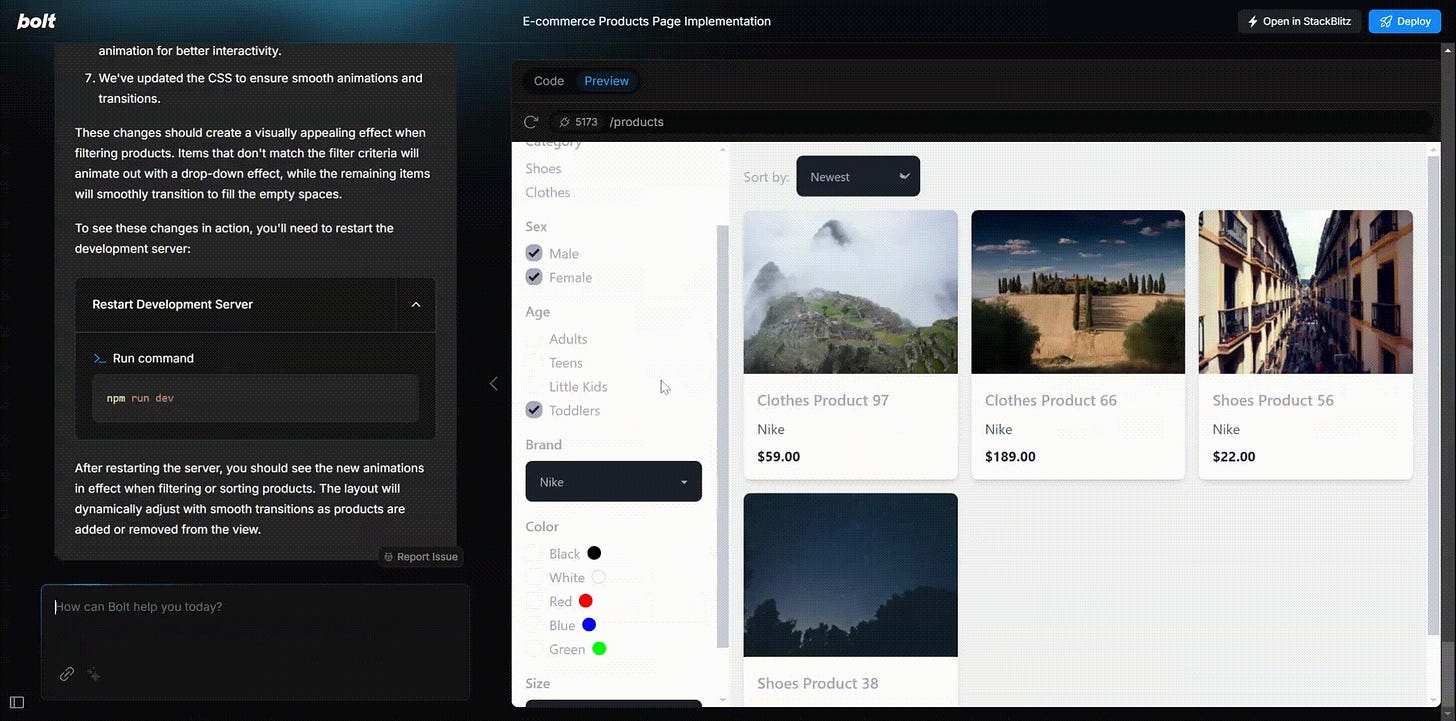
Crowded as the general space is already, there are a number of still-emerging categories as well. These may offer products targeting more specific engineering workflows and tasks, and some ones we’re paying attention to include:
Terminal-based tools like Claude Code and Warp, which - similar to the editors and agents, help generate code and commands (i.e. “help me set up my environment, help me fix my broken git state, help me run this project”) but within a different interface.
Mobile-first text-to-app platforms like VibeCode and Rork, which focus on producing fully runnable iOS/Android applications (i.e. a version of Wordle with 6 letters), often via a mobile app themselves.
AI security engineers like XBow and Seven AI, which automate offensive/defensive security by continuously generating attacks (i.e. identifying broken access control, taking advantage of outdated components, running SQL/prompt injections) to discover and address vulnerabilities across both AI-native and traditional systems.
AI production and site reliability engineers like Traversal and Resolve, which automate root cause detection and remediation for production incidents (i.e. application failures, network outages, database disruptions) which reduce downtime and on-call fatigue for engineers.
Overall, the editor and text-to-app categories have been growing the fastest, and Cursor and Lovable have led each, respectively. We previously had Cursor’s lead seed investor write a guest post about them here, and now we are excited to dive into Lovable.
Lovable
So, Lovable is an end-to-end platform for nontechnical users to build and host full-stack applications.
Again, while it often gets lumped under the same “vibecoding” designation as other AI coding tools like Cursor, platforms like Lovable go beyond contextual code generation in a few important ways:
Automated backend setup – when you need a database or other backend functionalities, Lovable automatically provisions auth, generates the SQL tables it thinks you need, and exposes ready-to-call endpoints without any manual schema work.
Automated debugging – if the generated code displays buggy behavior, Lovable automatically feeds the stack-trace back into its AI, surfaces a richer message, and proposes (or applies) a patch.
Automated deployment and hosting – when you’re ready to go live, Lovable can automatically build, host, and get a live URL (or custom domain) in one step, with the option to export the project to Netlify/Vercel if you prefer self-hosting.
Compared with other app-building platforms though, our belief is that Lovable has distinguished themselves by building the best platform to generate production-ready products. In some sense, this has introduced a new layer of abstraction.
What separates a basic application - hosted code that runs - from a production-ready product?
While an app must simply execute, a product is expected to look polished, stay secure, and meet certain integration or enterprise requirements. Its development might involve multiple parties, and post-launch it’s something that will need growth and marketing efforts.
Lovable’s platform is specifically designed to cover these broader requirements out-of-the-box. The product helps with all stages:
Ideation - you need to up with the idea for the product. Lovable allows you to draw inspiration from a rich template gallery and a Remix feature, which lets you fork existing apps and refine them iteratively via chat.
Visual Polish - you need to make the product look attractive to new users. Lovable builds its apps with an opinionated stack (React, Tailwind, ShadCN components) which makes them “beautiful by default”, and lets users tweak the details with a unique visual edit mode.
Collaboration - great products emerge when design, marketing, and engineering collaborate rather than operating in silos. Lovable provides real-time, multi-cursor editing and built-in Figma import capabilities, enabling teams to iterate quickly, share feedback, and align on a single vision.
Security - you need to make sure the product is secure, without common errors like a lack of row-level security and publicly available API keys. Lovable offers automated security scans to proactively catch potential vulnerabilities before deployment.
Enterprise Readiness - gaining adoption in enterprises requires navigating strict compliance standards, often a roadblock for smaller teams. Lovable simplifies enterprise adoption by offering built-in integrations (like Clerk and Supabase) for SOC 2, HIPAA, and GDPR-compliant authentication, secure data storage, single sign-on, and encryption - eliminating future compliance bottlenecks.
Growth and Marketing - you need to grow and market the product post-launch. Lovable embeds growth into the product lifecycle, automatically generating SEO metadata, sitemaps, and listing launched apps on its built-in discovery platform. It also guides users towards vetted growth agencies and affiliates with a dedicated marketplace.
Collectively, these features position Lovable as more than just a text-to-app platform - it’s a launchpad with everything needed to build, launch, and scale market-ready products from start to finish.
Lovable launched publicly in October of last year and has experienced rapid growth since. They crossed $100 million ARR in under a year, achieving week-over-week growth of nearly 50%. Lovable now generates more revenue each hour than it did in an entire month at launch, and its customer base spans large, established enterprises as well as indie hackers and solopreneurs.
The company was founded in November 2023 by Anton Osika and Fabian Hedin. Anton previously co-founded Depict.ai (raising approximately $20 million), was an early engineer at Sana Labs, and built the widely used open-source tool GPT Engineer. Fabian, the company's CTO, previously founded a property management software startup and worked with Anton at Depict.
On the strength of their exceptional early traction, Lovable raised a €6.8 million (~$7.5 million) seed round in October 2024 led by Hummingbird Ventures. Shortly after, they closed a $15 million pre-Series A led by Creandum. Then, a few months ago, they closed a $200 million Series A at a $1.8B valuation from Accel.
Lovable has a stellar team, a product people love, and some of the fastest growth any company has ever seen. Their ambition is to build the final software application - the app you can build all other apps on top of.
Can they pull it off?
It's definitely ambitious, but they've shown more promise than anyone else we've encountered. Even if they don't achieve their full vision, it’s clear they’re building something extremely valuable.
Let’s get into why.
The Market for Prompt-to-App Platforms
You probably don’t need convincing that the broader market around software development and consumption is enormous. At the end of 2024, there were roughly 28.7 million software developers globally, with 19.6 million categorized specifically as professional developers. Global software spending continues to grow steadily by more than 10% annually, and surpassed $1 trillion for the first time last year.
To us, the real opportunity, however, lies beyond serving professional developers.
How many people today aren't software developers but would significantly benefit from easily creating and monetizing software?
We know there’s substantial demand here because of the success of tools like Microsoft’s Power Platform. This suite of no-code/drag-and-drop tools lets users build basic applications (Power Apps), automate workflows (Power Automate), create websites (Power Pages), and analyze data (Power BI) without technical skills. Today, 7.5 million casual developers have built apps for themselves or their communities, serving 33 million total monthly end users - companies like Accenture, Rabobank, Westpac, Deutsche Bahn, and Zurich Insurance have collectively created thousands of apps and automated everything from customer support to asset management.
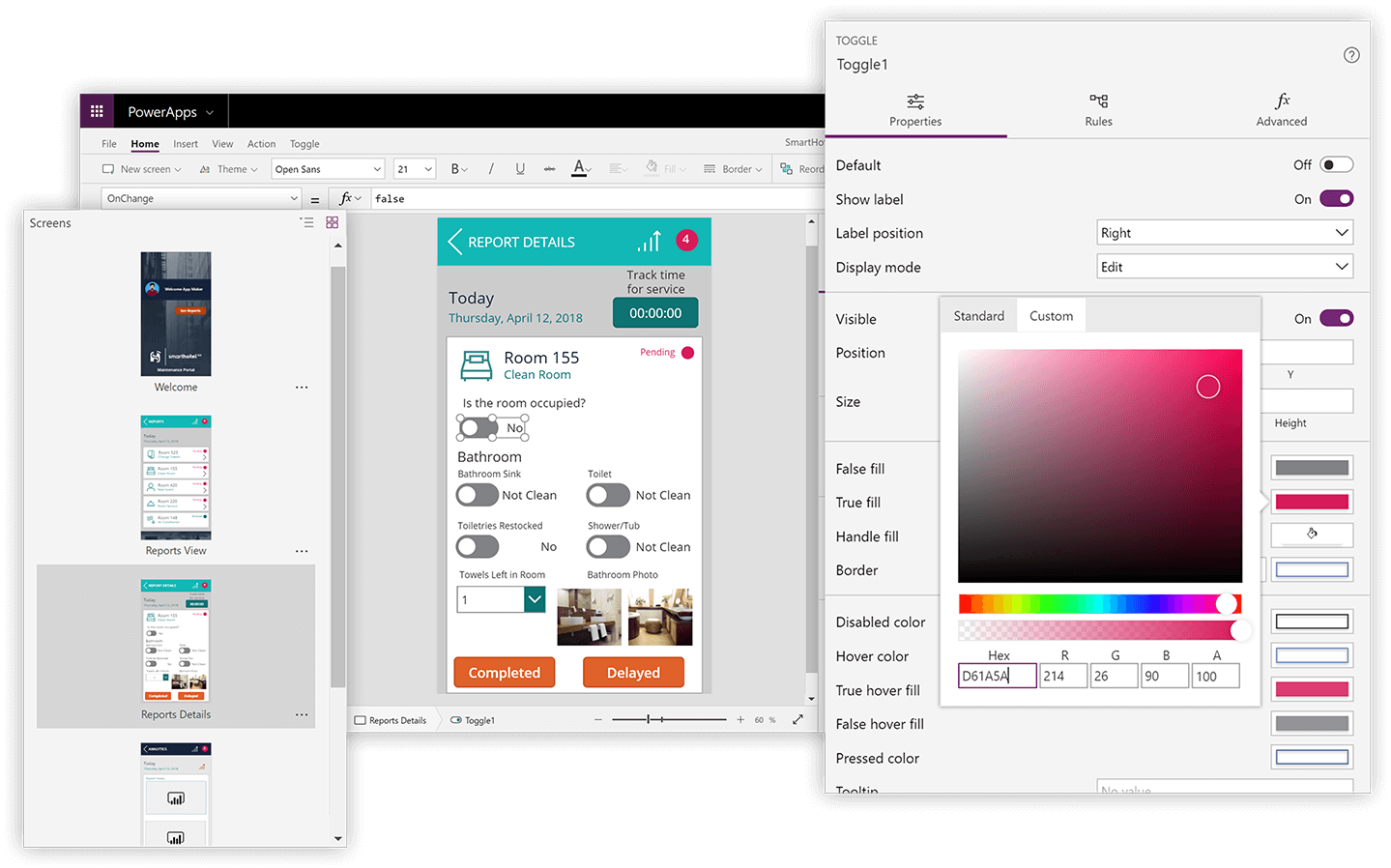
So, let’s take a direct approach to estimating the potential market size for text-to-app tools. How many people aren't professional developers today, but could meaningfully benefit from easily creating and selling software?
Quasi-Technical Professionals
These individuals typically have strong technical familiarity but lack formal coding skills or the time to fully build out software applications. They often have deep domain expertise, clearly understand user requirements, and regularly interact with technology teams. Text-to-app tools allow them to independently create software solutions, test prototypes quickly, and iterate efficiently, removing the usual bottlenecks and accelerating their workflow.
Product Managers: Globally, there are about 2.4 million product managers. These people routinely define product specifications and success metrics, making them natural adopters of prompt-to-app platforms to rapidly prototype and launch initial app versions.
UX/UI Designers: Estimates suggest there are between 1.5 and 3 million UX/UI designers globally. Designers regularly create detailed wireframes; vibecoding tools allow them to directly convert these into production-ready applications, speeding up development cycles significantly.
IT Professionals: There are 9.4 million IT specialists in the EU and 9.9 million in the U.S. alone, with millions more globally. These roles frequently involve developing internal tools, dashboards, and automation scripts - exactly the kind of applications suited for rapid creation with AI.
Scientists, Researchers, and Data Analysts: there are roughly 8.85 million researchers worldwide, and data-analysis roles are among the fastest-growing tech occupations globally. These professionals often prototype data apps and analytical pipelines, making them ideal candidates to leverage vibecoding tools to accelerate discovery and streamline workflows.
Net New Entrepreneurs and Small Businesses
These potential users typically already have distribution channels, domain expertise, or clear business needs. They understand their markets deeply, recognize unmet customer demands, or have specific operational problems they could solve with tailored software. Text-to-app platforms empower these individuals by drastically lowering the technical barrier, enabling them to rapidly prototype and launch custom digital solutions without needing extensive coding skills or significant upfront investment in software engineering.
Small-business owners: There are approximately 400 million small businesses worldwide. Many lack the resources to hire professional developers, yet they frequently require software solutions to boost revenue, streamline operations, or enhance customer engagement. Prompt-to-app platforms can empower these businesses by enabling them to create tailored software without technical hurdles.
Content Creators: The creator economy continues to grow, with 165 million new creators joining social platforms since 2020 and YouTube alone hosting 64 million active channels. Many of these creators already monetize digital products; vibecoding tools naturally extend their capability to create and sell niche-specific micro-apps or plugins.
These are all first-degree estimates of people who could directly find uses for and benefit from text-to-app tools today.
Though, when the costs of creating, hosting, and distributing any form of content drop dramatically - as we’ve seen with images on Instagram or videos on TikTok - innovation tends to follow in unpredictable ways. In this case, teachers might create personalized learning apps or classroom management tools. Local governments could quickly deploy apps for reporting civic issues and tracking responses. Nonprofits might build fundraising platforms or tools to coordinate community services.
In short, the market for text-to-app tools isn't just large - it could open up entirely new ways for hundreds of millions of people to solve problems and improve their daily lives.
Lovable’s Approach
So, out of all the text-to-app companies out there, why do we think Lovable stands out?
In our view, Lovable is the best solution for creating production-ready applications - real products (not toys) with the style, functionality, and polish that real users expect.
Lovable accomplishes this by innovating in three important areas: technology, product experience, and distribution.
Technology
Code generation with current models has become relatively straightforward. The real challenge is turning raw AI outputs into functioning, secure, and maintainable applications.
From a technology perspective, Lovable delivers here by being highly opinionated across the entire stack. This deliberate limitation helps the model produce focused, robust results:
An opinionated backend. Lovable insists on using Supabase as the canonical data layer. Users can connect their databases in a few clicks by logging in and selecting their Supabase project. Because Supabase packages SQL, row-level security, real-time listeners, storage, and authentication behind a single Postgres endpoint, the agent always has a predictable interface to reason about. It can easily query schemas, infer relationships, and analyze logs to debug efficiently. Lovable has integrated Supabase more deeply than competitors, supporting advanced features like real-time functionality and edge functions (edge functions in particular aren’t deployable directly via API, meaning Supabase had to do more extra work - perhaps running the CLI server-side in temporary containers or VMs - to support this). While a "bring-your-own-database" approach might seem flexible, it would force the model to juggle different permission models and migration formats, complicating reasoning and multiplying the number of possible failure modes. By standardizing on Supabase, Lovable can treat migrations, secrets and logs as first-class primitives instead of unstructured text, and that tight coupling is exactly what lets the AI debug live issues rather than merely generate code snippets.
An opinionated frontend. Lovable constrains the front-end to ShadCN/Radix components styled with Tailwind CSS. For example, when the AI generates a confirmation dialog, it simply imports the Radix
AlertDialogwrapped in ShadCN’s styledDialog, applying Tailwind classes likebg-primary text-white px-4 py-2 rounded-md shadowto buttons. This approach instantly creates an accessible, dark-mode-friendly UI compliant with WCAG standards. While this restriction might initially appear limiting compared to free-form CSS generation, it dramatically simplifies the decision space for the AI, eliminating common errors like inaccessible color schemes while ensuring visual consistency across regenerations. With a predefined palette of components, the model can focus on application logic rather than style, ensuring visual polish and consistency without manual intervention.An opinionated editing experience. Lovable isn't just prescriptive about generated code; it clearly defines how that code moves from prompt to production. Large-scale structural changes happen in AI Chat Mode, while detailed visual adjustments are managed in Visual Edit Mode. This clear division streamlines development, resulting in cleaner diffs and polished production-quality apps. Features typically start in AI Chat Mode, where users specify high-level goals, such as “Add a usage-based billing dashboard with monthly summaries.” Here, Lovable’s AI acts as a proactive partner and virtual CTO as opposed to a passive code printer - asking clarifying questions, exploring options, writing an implementation plan, editing files, compiling code, checking logs, and iteratively refining until it works. Instead of generating isolated snippets, Lovable ensures every loop either results in a working build or precise debugging guidance, avoiding cryptic errors. Once the basic feature is complete, the process moves to Visual Edit Mode, a unique Lovable offering. Here, designers (or developers) make pixel-perfect adjustments visually—moving buttons, changing text colors, or editing copy directly on the live app. This avoids the inefficiency of repeatedly prompting the model for minor changes, significantly reducing costs and unintended side-effects.
Lovable’s approach extends to other native integrations as well - GitHub for code hosting, Stripe for payments, and Netlify/Vercel for deployments with custom URLs. Additional recommended integrations include Resend for email, Clerk for authentication, Make for workflow automation, and Replicate for model hosting.
Together, these opinionated constraints - a fixed backend, mandatory agent loop, prescriptive design system, and targeted visual edits - combine into a tightly-integrated system optimized specifically for AI-driven development. While broader compatibility might sound appealing, it dilutes the AI's context and shifts complexity onto users.
Product
Building a successful product involves more than just creating an app—it typically requires careful navigation of each step from the initial idea to a polished, shipped product. Lovable clearly understands this distinction and supports users with thoughtfully designed workflows at every stage of the product lifecycle, making the overall journey smooth and efficient:
Ideation with Remixing and Forking: Many great products start by building on existing ideas, iterating and experimenting quickly. Lovable’s Remix feature supports this workflow by allowing users to clone existing projects - both public projects and their own - into clean, fresh workspaces without carrying over database data. Because remixes retain stable IDs and Git history, teams can confidently test ideas, merge successful experiments, and integrate improvements, streamlining the path from initial idea to viable product.
Sophisticated Debugging for Iterative Refinement: Real-world products often encounter issues, making effective debugging an important step in ensuring quality. Lovable treats debugging as a core workflow, clearly surfacing runtime errors and offering users an AI-driven “Try to Fix” option. The AI analyzes detailed Supabase, Vercel, and browser logs, identifies the issue, and proposes targeted fixes. If the initial fix isn't sufficient, users easily transition into Chat Mode, where the AI iteratively clarifies problems and generates minimal, Git-backed diffs for straightforward review and debugging. This structured approach helps efficiently refine the product while minimizing potential regressions.
Visual Polish for Market Appeal: Visually appealing interfaces often help products gain adoption. Lovable’s unique Visual Edit mode provides a Webflow-like experience directly within the app, enabling precise, pixel-level adjustments. Each JSX element is linked to specific source code lines via unique and immutable JSX IDs, allowing designers and developers to quickly refine visuals without triggering full code regeneration. Hot-reloading offers immediate feedback, supporting quick and precise UI improvements that enhance overall user experience.
Collaboration to Align Product Vision: Effective collaboration between design, engineering, and marketing teams frequently leads to better products. Lovable uniquely facilitates this collaboration with real-time, multi-cursor workspaces featuring integrated Git versioning and precise permission controls. For more complex tasks, Dev Mode offers an in-platform IDE experience, allowing experienced developers to manually edit alongside the AI. This unified environment helps all team members stay aligned, productive, and coordinated in delivering a cohesive product.
Production Readiness for Enterprise Adoption: Gaining adoption in enterprises typically means meeting stringent compliance and security standards. Lovable proactively addresses these requirements through built-in AI-driven security scans before each deployment, checking for common issues like incorrectly configured Supabase RLS policies and hard-coded secrets. Additionally, Lovable’s login flow provides an SSO option, enabling larger organizations to integrate with existing identity providers. Comprehensive admin roles, automated secret management, and detailed audit trails further reduce risk, ensuring products created with Lovable are secure, compliant, and enterprise-ready.
Seamless Code Export and No Lock-in: Supporting growth and scalability often involves keeping products flexible and transferable. Lovable ensures users never feel locked in by offering seamless GitHub integration that continuously syncs projects for easy deployment on platforms like Vercel or internal Kubernetes clusters. Teams can rapidly prototype within Lovable and confidently hand off their work to larger development teams, supporting long-term product evolution and maintainability.
Built-in Distribution Support: Effective product distribution post-launch is important for long-term success. Lovable includes an integrated SEO engine that automatically generates metadata, XML sitemaps, and robots.txt files through simple prompts. Additionally, Lovable’s Partner marketplace helps non-technical founders easily access vetted growth agencies and professionals, facilitating efficient product marketing and expansion within the Lovable ecosystem.
Collectively, these targeted features and workflows form a structured, integrated framework that guides users effectively from initial concept to shipped and polished product.
Distribution
Finally, Lovable’s distinctive distribution approach directly aligns with its core philosophy: empowering users to create polished, externally-focused products rather than just basic applications. By specifically targeting aspiring entrepreneurs and teams building businesses or products for external users, Lovable leverages accelerators, hackathons, and other user-driven promotional tactics designed explicitly for this audience. This focused strategy has driven Lovable’s early market leadership, organically attracting users motivated to build successful software products:
Structured Programming for Product Launches: Lovable’s flagship accelerator, "Shipped," explicitly guides participants from initial ideas to fully launched, market-ready products and opened its first season in June of this year. Participants benefit from $3 million in cloud and tooling perks, a structured weekly schedule of lectures and check-ins, and an end-of-program demo day in San Francisco. Accepted participants join a dedicated Discord cohort channel, with progress updates shared publicly - transforming each in-flight project into effective marketing for future cohorts.
Hackathons Showcasing Product Potential: Lovable regularly organizes focused hackathons tailored for entrepreneurs building real, market-ready products. For instance, the June 2025 AI Showdown offered full platform access free for forty-eight hours, complemented by a $65,000 prize pool across distinct tracks for OpenAI, Anthropic, and Google Gemini integrations. The event's announcement in We Are Founders detailed the prize structure and emphasized the model-versus-model competition theme, followed by a subsequent article highlighting the three winning apps and confirming prize distributions. Earlier that month, Lovable also co-hosted a USA vs. Canada hackathon, awarding a $10,000 prize and a slot at Lovable’s in-person demo day.
Educational Content Supporting Product Builders: Lovable consistently provides practical educational content tailored to aspiring entrepreneurs, including live streams, AMAs, and workshops such as "Build and Monetize Your App in 45 Minutes" or "Landing Page Challenges." These resources clearly illustrate the journey from concept to monetizable product, appealing directly to users focused on practical product development rather than abstract demonstrations.
UGC and Collaborative Discovery: Lovable's most effective promotion comes from showcasing real projects built by its users. "Launched," a Product-Hunt-style platform, prominently displays recently deployed products, driving discovery through community-driven upvotes. Lovable’s documentation explicitly positions "Launched" as a major channel for traffic generation, and the company amplifies featured products via their own social media accounts for additional visibility. Additionally, deployments feature clear branding with "Built with Lovable" default link preview images. Integrated multi-user editing further encourages team collaboration, expanding Lovable’s adoption internally as teammates introduce it to each other.
Targeted SEO for Product Discovery: Lovable currently offers over 130 highly-specific landing pages optimized around precise use cases such as Customer Feedback Tools, CRM systems, Interactive Storytelling Apps, and other solutions entrepreneurs might seek to build and distribute. This targeted approach captures users as they search for something to build an idea in their head.
Lovable’s founder and CEO, Anton, even reinforces this ethos by angel investing in businesses built using Lovable.
Competitive Landscape
Now that we have a deeper understanding of Lovable’s strengths as a product and company, let’s take a deeper look at how they compare against other products with text-to-app functionality.
Last Generation Low/No-Code
Each of these products offers low/no-code tools for building full-stack applications, but they emerged before generative AI became mainstream, so their foundational approaches are fundamentally different. Broadly, these earlier-generation tools rely heavily on proprietary ecosystems, closed runtimes, and restrictive design paradigms that limit flexibility, scalability, and portability.
In practice, this means that while they're great for quickly prototyping or visually assembling basic applications, they fall short once your app grows more complex or requires deeper integration with third-party services. This lock-in often leads to issues down the line, such as difficulty exporting code, integrating new features, or scaling effectively to handle increased traffic or complexity. Additionally, expanding beyond built-in capabilities usually requires cumbersome hacks or expensive workarounds.
In contrast, the new wave of generative-AI-driven tools like Lovable start from a fundamentally different place. Instead of restricting users to proprietary environments, they generate clean, fully portable, and standards-compliant code from day one. This makes it straightforward to add custom business logic, integrate external tools, deploy on any platform, and scale without hitting vendor-imposed limitations.
Taking some of the larger players in this category one-by-one:
Bubble offers a drag-and-drop visual app-building experience built around a proprietary runtime and database. It’s great for quick prototypes, but severely restricts flexibility due to its closed ecosystem. It has no straightforward way to export code or integrate third-party tools, leading to lock-in and scalability issues once apps grow beyond basic hobbyist use. In contrast, Lovable generates clean, standards-based code from the start, enabling easy export, integration, and scaling within the broader ecosystem.
Webflow shines at creating visually polished front-end websites and interfaces with the most sophisticated visual editor available. However, it lacks important full-stack features like authentication, backend logic, and relational databases, making the development of full-stack applications difficult and costly with external integrations. In contrast, Lovable directly generates complete, deployable applications - including backend logic, authentication, and APIs - from simple text prompts, combining ease of use and robust functionality.
Airtable relaunched in June 2025 as an “AI-native app platform.” Their new agent, Omni, builds apps and automations from prompts but remains constrained within Airtable’s closed runtime. There's no direct code export, and extending functionality beyond Airtable’s built-in capabilities involves custom scripting. In addition, Airtable primarily targets internal, B2B use cases at large established companies, with a focus on optimizing existing workflows. In contrast, Lovable empowers builders to create entirely new, externally-facing products with fully open-source and exportable code, providing complete flexibility in integration, customization, and deployment without vendor lock-in.
Retool pivoted towards generative development in April 2025 with an AI App Generation preview, enabling quick assembly of internal applications using Retool’s predefined component blocks and integrated development environment. However, Retool specifically caters to internal use cases within larger enterprises, emphasizing B2B solutions aimed at improving internal processes (i.e. building dashboards) as opposed to focusing on people who want to launch completely new and often externally-facing products like Lovable. The two products have different use cases and end users.
Next Generation No-Code
Like Lovable, these products launched after generative AI took off, generating apps end-to-end directly from simple prompts. Unlike traditional no-code platforms relying on custom ecosystems or proprietary frameworks, these tools often produce real, usable code built on open-source foundations. But compared to Lovable, they generally don't handle the complete product lifecycle as smoothly - whether it’s backend integration, collaboration with teammates, or growing beyond quick prototypes.
Taking some of the larger players in this category one-by-one:
Bolt: Bolt, built by the StackBlitz team, is the closest competitor to Lovable, offering full-stack app generation directly in the browser using StackBlitz’s WebContainers. Technically, this is quite impressive - WebContainers allow you to spin up a full Node.js runtime locally without servers, offering instant reloads and offline development. However, Bolt lacks Lovable's features geared towards makers and entrepreneurs. It doesn't have a visual editor, remixing capabilities, SEO optimization tools, or strong community-building features. As a result, despite Bolt's early advantage (it was about 10x Lovable’s size revenue-wise at the end of last year), Lovable has rapidly caught up and surpassed Bolt by offering a more comprehensive and growth-friendly experience.
Vercel v0: Vercel v0 is designed to rapidly generate frontend React components and polished UI elements using generative AI, deeply integrated within the Vercel hosting ecosystem. Yet, it's strictly frontend-oriented—there’s no built-in support for databases, authentication, or APIs. It also lacks the visual editing and remixing features provided by Lovable. Given Vercel’s core business revolves around hosting rather than end-to-end app generation, the limitation is somewhat understandable. However, users needing more than frontend scaffolding will quickly find themselves handling manual backend integrations.
Replit Agent: Replit Agent uses AI to automatically generate and deploy apps on Replit’s custom cloud environment—essentially a smart coding assistant that handles coding, debugging, and deployment from a simple description. Besides using a proprietary ecosystem and being less flexible with exports like other last-generation tools, Replit’s interface remains more code-centric than other tools in this category due to its origins as a collaborative IDE for technical users (similar to Google Docs for developers). While this makes it great for developers comfortable with terminals, IDEs, and traditional software engineering workflows, non-technical users and designers might prefer Lovable.
Canva Code: Canva, primarily known as a user-friendly design tool, recently introduced Canva Code. This feature enables users to effortlessly embed interactive HTML/CSS/JS snippets directly into Canva designs, perfect for quick landing pages or interactive marketing campaigns. However, Canva Code remains limited to frontend features; backend integrations (such as authentication or databases) must be implemented manually by advanced users. Additionally, it doesn’t allow exporting complete projects—only individual snippets of code—which requires manual integration outside the Canva ecosystem.
Figma Make: Figma, another widely-used design tool, introduced Figma Make to turn visual design frames directly into interactive web apps, allowing designers significant frontend control. While excellent for design-centric workflows, Figma Make currently lacks backend support—no built-in databases, authentication solutions, or options for exporting to Git or other hosting services. As a result, Figma Make excels in prototyping and visual demos but falls short for comprehensive, production-ready full-stack app development.
Team
Lovable wants to build the last piece of software - the app you can build all other apps on top of.
It’s an ambitious vision, but they’ve put together an excellent team to make it happen. Consider a sampling of their roster:
Anton Osika — Co-Founder, CEO
Anton was previously the Co-Founder and CTO of Depict.ai, a YC-backed startup that raised $20 million. Before that, he was a founding engineer at Sana. He holds a MS in Engineering Physics and Applied Mathematics from the KTH Royal Institute of Technology.
Fabian Hedin — Co-Founder, CTO
Fabian was previously Frontend Lead at Depict. Before that, he was Co-founder and CTO of TenFAST, a property management startup. He holds a BS in Industrial Engineering and Management from the KTH Royal Institute of Technology.
Elena Verna - Growth
Elena was previously Interim Head of Growth at Amplitude. Before that, she was Interim CMO at Miro and SVP, Consumer Product at Malwarebytes. Before that, she was SVP of Growth at SurveyMonkey. She holds a BS in Statistics from UC Berkeley.
Tiger Abrodi - Member of Technical Staff
Tiger was previously a Senior Product Engineer at ENLYZE. Before that, he was a Senior Software Engineer at Bobsled.
Marten Wiman - Member of Technical Staff
Marten was previously Co-Founder of Optimeringsfabriken, a consulting company. Before that, he was a Software Engineer at Google and Veridict. He holds a MS in Engineering, Computer Science, and Physics from the KTH Royal Institute of Technology.
Tomas Nordström - Member of Technical Staff
Tomas was previously Co-Founder and CTO of PowerMate. Before that, he was a Data Scientist at Nrlyze AB. He holds an ME in Computational and Applied Mathematics from the KTH Royal Institute of Technology.
Emil Ahlbäck - Member of Technical Staff
Emil was previously a Founding Engineer at Godmode. Before that, he was a Frontend Engineer at Depict. He holds an MS in Computer Science from the KTH Royal Institute of Technology.
Amir Salim - Member of Technical Staff
Amir was previously Founder of Education Geeks, a bootstrapped edtech startup he bootstrapped to $5m in revenue.
Viktor Eriksson - Member of Technical Staff
Viktor was previously an Engineering Manager at Stripe. Before that, he was a Software Engineer at Pair Team. He holds a MS in Engineering, Industrial Engineering, and Management from the KTH Royal Institute of Technology.
Alexander Wikström - Member of Technical Staff
Alexander was previously the Founder of Darwin, an AI sales agent. Before that, he was the Head of Business Development and GTM for Forloop. He holds a BS in Business and Economics from the Stockholm School of Economics.
Nad Chishtie - Product Designer
Nad was previously VP of Design at Element. Before that, he was Lead Designer at CMUNE.
Mindaugas Petrutis - Growth
Mindaugas was previously Director of Technical Programs at On Deck. Before that, he was Head of EMEA Community at InVision, and the Founder of Sketch Labs.
Felix Haas - Product Designer
Felix was previously Designer in Residence at Creandum. Before that, he was Co-Founder of Blossom Design, a design studio, and the first designer at Mapify Travel.
Caroline Wong - Business and Operations
Caroline was previously Co-Founder of ZOPA 254, a startup building AI solutions for African retailers. Before that, she was a consultant at BCG. She holds an MS in International Political Economy from LSE.
Lovable has assembled a strong team with some of the most ambitious talent across Europe, including many former founders and hustler-solopreneurs-types - exactly the audience of builders Lovable now serves.
Conclusion
Building software products has always come with some set of challenges.
These challenges, though, have come down with time: punchcards became bits, low level programming languages became high level ones, and our infrastructure learned to scale itself.
Lovable wants to be the final and most significant step on this staircase: the app which can build all other apps, to make software development truly effortless.
The future of software might finally be simple.
They’re hiring.
In case you missed our previous releases, check them out here:
And to make sure you don’t miss any future ones, be sure to subscribe here:
Finally, if you’re a founder, employee, or investor with a company you think we should cover please reach out to uhanif@stanford.edu - we’d love to hear about it :)





